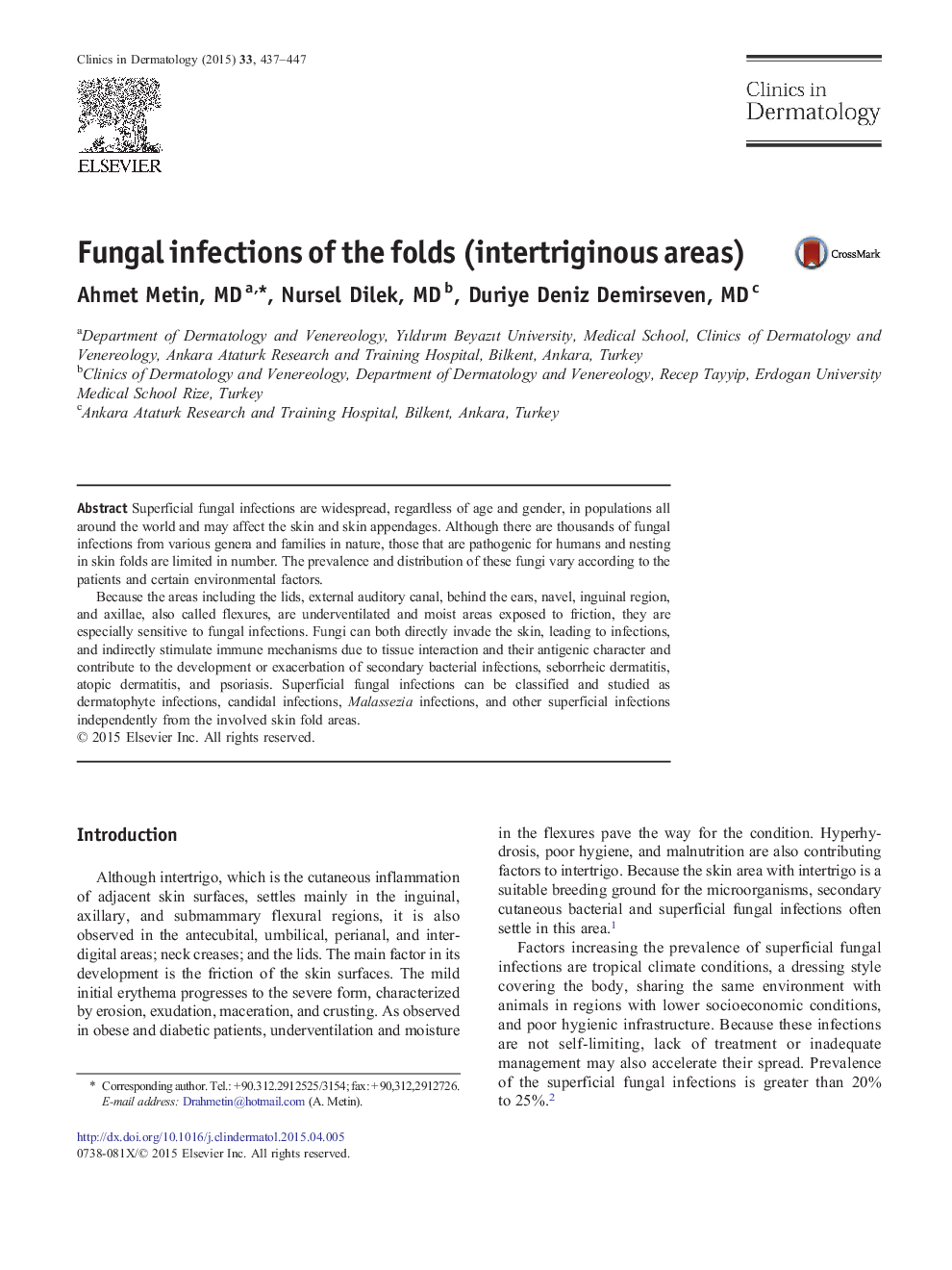| Article ID | Journal | Published Year | Pages | File Type |
|---|---|---|---|---|
| 3194034 | Clinics in Dermatology | 2015 | 11 Pages |
Superficial fungal infections are widespread, regardless of age and gender, in populations all around the world and may affect the skin and skin appendages. Although there are thousands of fungal infections from various genera and families in nature, those that are pathogenic for humans and nesting in skin folds are limited in number. The prevalence and distribution of these fungi vary according to the patients and certain environmental factors.Because the areas including the lids, external auditory canal, behind the ears, navel, inguinal region, and axillae, also called flexures, are underventilated and moist areas exposed to friction, they are especially sensitive to fungal infections. Fungi can both directly invade the skin, leading to infections, and indirectly stimulate immune mechanisms due to tissue interaction and their antigenic character and contribute to the development or exacerbation of secondary bacterial infections, seborrheic dermatitis, atopic dermatitis, and psoriasis. Superficial fungal infections can be classified and studied as dermatophyte infections, candidal infections, Malassezia infections, and other superficial infections independently from the involved skin fold areas.
